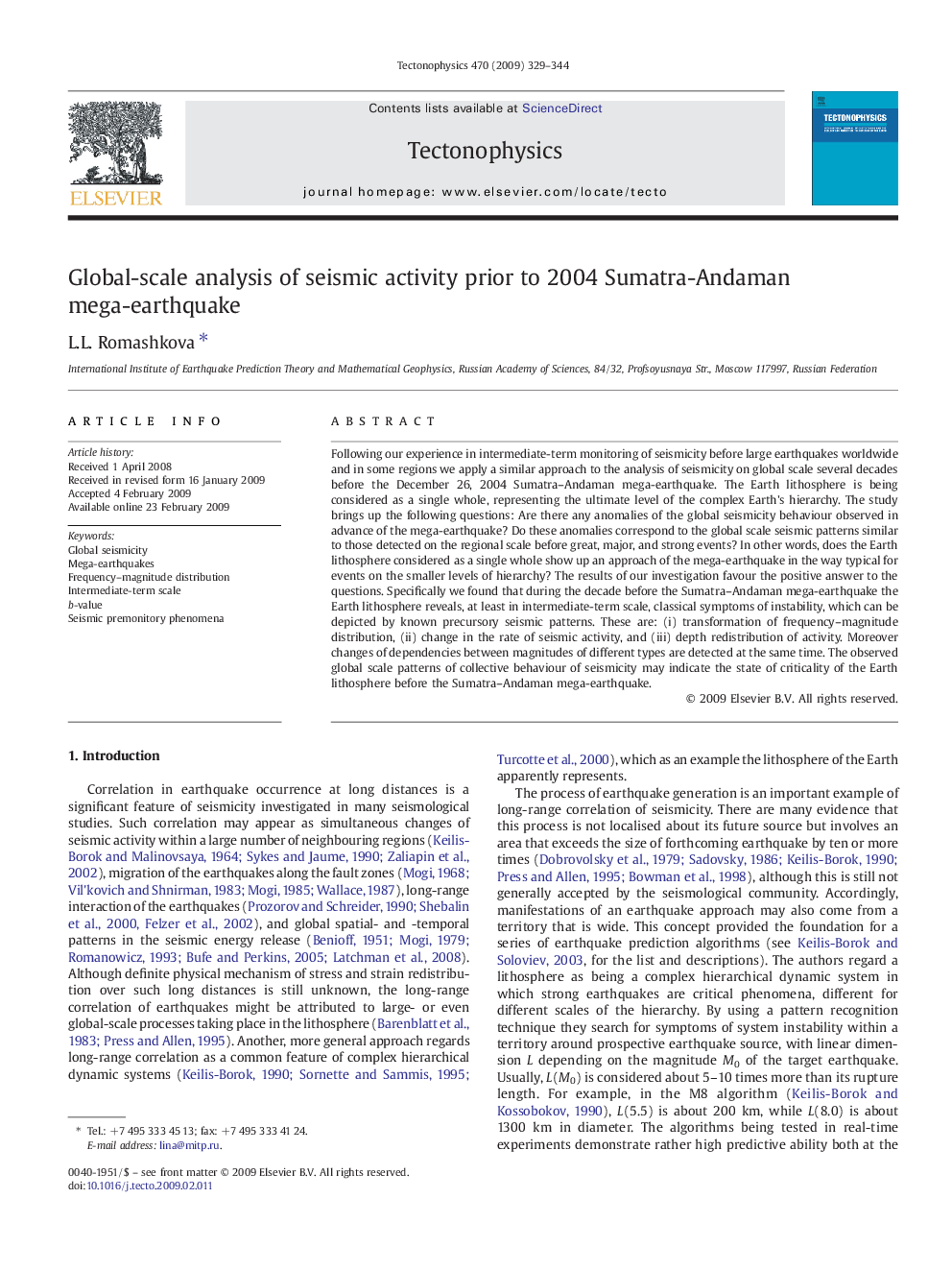| Article ID | Journal | Published Year | Pages | File Type |
|---|---|---|---|---|
| 4693850 | Tectonophysics | 2009 | 16 Pages |
Following our experience in intermediate-term monitoring of seismicity before large earthquakes worldwide and in some regions we apply a similar approach to the analysis of seismicity on global scale several decades before the December 26, 2004 Sumatra–Andaman mega-earthquake. The Earth lithosphere is being considered as a single whole, representing the ultimate level of the complex Earth's hierarchy. The study brings up the following questions: Are there any anomalies of the global seismicity behaviour observed in advance of the mega-earthquake? Do these anomalies correspond to the global scale seismic patterns similar to those detected on the regional scale before great, major, and strong events? In other words, does the Earth lithosphere considered as a single whole show up an approach of the mega-earthquake in the way typical for events on the smaller levels of hierarchy? The results of our investigation favour the positive answer to the questions. Specifically we found that during the decade before the Sumatra–Andaman mega-earthquake the Earth lithosphere reveals, at least in intermediate-term scale, classical symptoms of instability, which can be depicted by known precursory seismic patterns. These are: (i) transformation of frequency–magnitude distribution, (ii) change in the rate of seismic activity, and (iii) depth redistribution of activity. Moreover changes of dependencies between magnitudes of different types are detected at the same time. The observed global scale patterns of collective behaviour of seismicity may indicate the state of criticality of the Earth lithosphere before the Sumatra–Andaman mega-earthquake.
